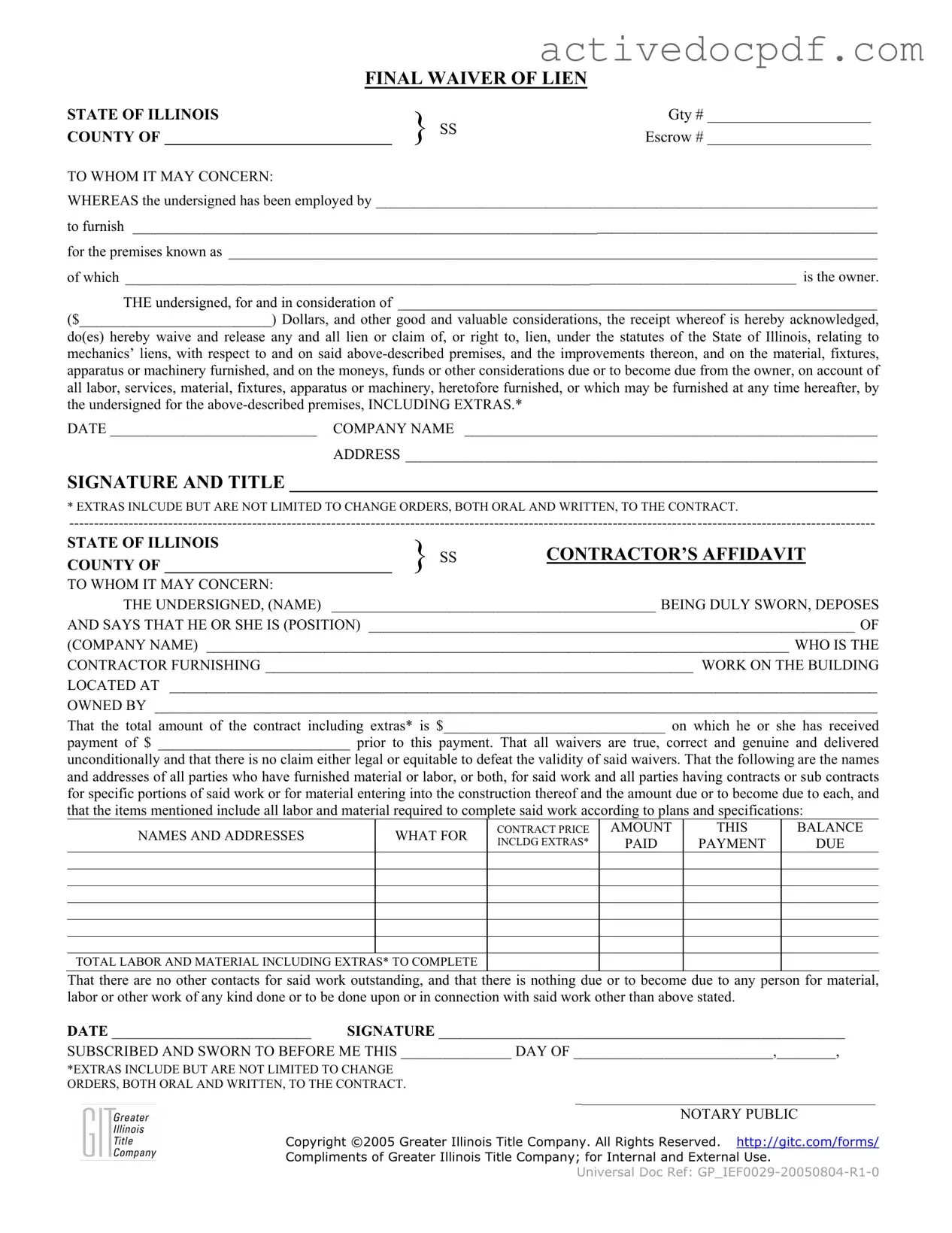The Illinois Final Waiver of Lien form serves to release any claims or liens against a property by a contractor or subcontractor. When this form is executed, it indicates that the contractor has received payment for their work and waives any future claims related to that work. This helps ensure that property owners are protected from potential legal issues regarding unpaid labor or materials.
The form must be signed by the contractor or subcontractor who performed work or provided materials for the property in question. This individual must also be in a position to verify that all payments have been made and that no further claims are outstanding.
The form requires several key pieces of information, including:
-
The name and address of the contractor or subcontractor.
-
The name of the property owner.
-
A description of the work performed or materials provided.
-
The total contract amount, including any extras.
-
The amount paid prior to this payment.
-
The balance due, if any.
All of this information helps clarify the terms of the agreement and ensures that all parties are on the same page.
In this context, "extras" refer to any additional work or materials that were not included in the original contract. This can include change orders, whether they are written or verbal. It is essential to account for these extras to ensure complete transparency regarding the total costs and payments associated with the project.
Yes, the form must be notarized. The signature of the contractor or subcontractor must be witnessed by a notary public to confirm its authenticity. This step adds an extra layer of protection and validity to the waiver.
If the Illinois Final Waiver of Lien form is not executed, the contractor or subcontractor retains the right to file a lien against the property. This could lead to legal complications for the property owner, including potential claims for unpaid work or materials. It is advisable for property owners to ensure that this form is signed upon completion of the project to avoid such issues.
Can the waiver be revoked after it is signed?
Once the Illinois Final Waiver of Lien form is signed and notarized, it generally cannot be revoked. The waiver is a legal document that confirms the contractor has received payment and waives any future claims. If there are disputes about payment or work quality, those issues should be resolved before signing the waiver.
